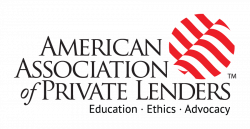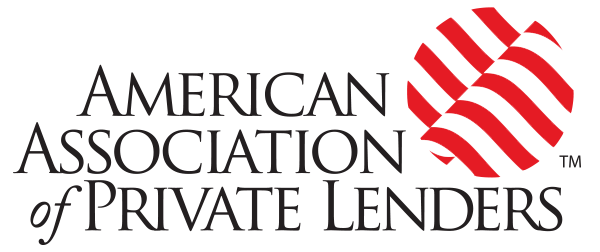Many commercial banks are already funding private lenders in your area and are interested in expanding.
Private lending can be financially rewarding and highly enjoyable. It is a fantastic way to get exposure to short-term investing, ultimately secured by real estate via a mortgage, without the heavy lifting of flipping properties.
Private lending is a scalable business. Smaller private lenders have been able to dominate many local markets for a few primary reasons: closing turn time, construction draw turn time, lack of onerous loan-to-cost requirements, and access to local expertise and industry contacts. Closing turn time, in particular, is an area in which national lenders, usually with lower cost of funds and better pricing for borrowers, struggle to compete with smaller lenders. Off-market deals and wholesalers drive a significant amount of loan opportunities and, for the most part, they prioritize speed over everything else.
Most private lenders start using their own capital or raise money from wealthy individuals; self-directed IRAs are a top source. However, wealthy individuals often demand higher returns, may have limited resources, and will put their capital to work when deals become available. They often are not willing to keep it on the sidelines until the moment you are ready to transact.
Raising a fund is a more advanced source of capital, but there are significant upfront costs and no guarantee of being able to raise the capital necessary to be viable. Many funds are abandoned each year because of this and other challenges.
A great option for raising capital is commercial banks. Many commercial banks are already funding private lenders in your area and are interested in expanding their exposure to the space. Although it is possible to persuade banks less familiar with private lending to get involved, that is a much tougher task than getting bankers already involved to add your business to their portfolio.
Why Banks Want Your Business
Many bankers in the space absolutely love it for a few key reasons:
- Real estate exposure. Banks’ exposure to different loan categories is closely regulated. Direct investment in real estate is one area regulators heavily scrutinize. But, if structured properly, bank funding of private money loans is not considered a real estate loan, giving banks the ability to invest in real estate-backed transactions without impacting critical ratios or maximums.
- Short-term notes. Due to many risks, including difficulty in predicting future economic conditions and interest rate risk exposure, most banks prefer shorter term notes, such as 12–18-month private money loans.
- Efficiency. Direct lending in real estate is taxing. Processing mortgage loans is time-consuming and has a higher labor cost than many other revenue-generating activities. Funding private money loans usually involves a relatively quick final review of the documents the private lender has acquired, saving time and money, compared to the heavy lifting that comes with acquiring documents such as appraisals, title policies, and other paperwork from third parties and borrowers.
Pros and Cons for Private Lenders
The advantages to raising capital with commercial banks are many, including:
- Lower interest rates. Interest rates are usually set at some spread above an industry index, such as the Wall Street Journal Prime Rate, which is the average of the rates the 30 largest commercial banks charge to their most-favored customers.
- Lower cost structure. Wealthy individuals may require a fee associated with the funding of each transaction. Many banks will allow lenders to pay one fee for unlimited transactions on the commercial line for a certain period (e.g., one or two years).
- Safety. The risk of the capital not being available when needed is incredibly low versus the much higher risk of it not being available when dealing with wealthy individuals.
- Consistency. Once capital is raised, most banks will renew or even expand the line annually. It can be challenging to get the first line, but it is easy to maintain it if you are organized, responsive, and meet the expectations of the bank.
There are also challenges you should be aware of when raising money with commercial banks. Here are a few to consider:
- Higher accounting expectations. Banks have high expectations for bookkeeping. All entities in which you have ownership must be highly organized. Although many small business owners emphasize their P&L, many bankers are passionate about the balance sheet. Both must be detailed, and you must be able to confidently answer questions about your business.
- Personal financial statements. Almost all banks will require a personal financial statement and ongoing financial updates on a quarterly or annual basis. You must provide a bank-approved document with an overview and supporting documentation.
- Definitions of default. Many banks can have broad definitions of default, so closely read all documents. Examples of default language may include not providing updated financials, changes in ownership structure, changes in financial situation, and even the bank’s perception that you might someday default. The default language can sometimes be negotiated, although that can be challenging if you don’t have strong banking relationships.
- Changes in bank ownership and structure. The primary objective of some smaller commercial banks is to be acquired. It happens more than many bank clients would like. This can lead to changes in leadership and relationship management, risk appetite, or underwriting guidelines. In some instances, the new bank may not want to provide funding to private lenders.
- Audited or reviewed financial statements. As you grow your business, some banks will request and potentially require audited or reviewed financial statements. An audit is the highest level of evaluation and the most expensive. In most instances, by the time these evaluations are needed, the cost will be reasonable relative to your profits.
Tips for Working with Banks
Here are some helpful hints on raising private lending capital with banks:
- Build your network. Work to build relationships with other lenders and bankers in the space.
- Identify banks that focus on the business. If you are friends with other private lenders, you can ask for referrals. If not, you can call lenders and ask if they are already in the space.
- Raise your accounting bar. Ensure your bookkeeping is accurate and strong by hiring better internal staff—or outsource the function to others.
- Increase your understanding of the P&L and the balance sheet. There are many books, blogs, podcasts, and webinars that can greatly increase your knowledge in this area. Developing a stronger understanding of these documents will not only help you raise capital but also improve your ability to make solid financial decisions in general.
- Focus on your bottom line. The balance sheet and P&L will not lie. There are many banks that want to provide capital, but they will insist you run a highly profitable business.
- Maintain high quality. In private lending, you must take risks, but keep them reasonable. Bankers do not like cowboys.
- Build guidelines and standard operating procedures. This is another category that will help you in countless ways. Banks want to know you have relatively consistent standards and well-defined processes.
- Create a presentation. Your presentation does not have to be over the top, but providing a clear message of your vision, team, standards, and performance will make an enormous difference to bankers.
Getting the first commercial line for private lending can be difficult, but it is worth it. Remember, once one bank approves you, each additional line gets significantly easier.











Leave A Comment